Contents
Choking: First aid

When does choking occur?
Choking occurs when a foreign object becomes lodged in the throat or windpipe, blocking the flow of air. In adults, a piece of food often is the culprit. Young children often swallow small objects. Because choking cuts off oxygen to the brain, administer first aid as quickly as possible.
What are the Signs for choking?
The universal sign for choking is hands clutched to the throat. If the person doesn't give the signal, look for these indications:
- Inability to talk
- Difficulty breathing or noisy breathing
- Inability to cough forcefully
- Skin, lips and nails turning blue or dusky
- Loss of consciousness
What to do if choking occur for an adult?
If choking is occurring, a "five-and-five" approach to delivering first aid:
- Stand behind the person.
- Give 5 back blows. First, deliver five back blows between the person's shoulder blades with the heel of your hand.
- If the choking persist, give 5 abdominal thrusts (also known as the Heimlich maneuver).
- Wrap your arms around the waist. Tip the person forward slightly.
- Make a fist with one hand. Position it slightly above the person's navel.
- Grasp the fist with the other hand. Press hard into the abdomen with a quick, upward thrust - as if trying to lift the person up.
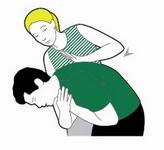
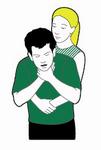
What to do for babies under 1 year?
For babies under 1 year:
- Give 5 Back blows:
- Lie the baby face down across or along your lap, with their head lower than their bottom.
- Support the baby’s head from underneath by placing your thumb on one side of their jaw and one or two fingers on the other side. This is to make sure their airway is open.
- Be careful not to press on the neck or the soft skin under the lower jaw.
- Give up to 5 firm slaps to the baby’s back between their shoulder blades with the heel of your hand. (The heel is between the palm of your hand and your wrist).
- Pause between each blow to see if the blockage has cleared. Do not poke your fingers into the baby’s mouth unless you can see and reach the blockage, as you may push it further in.
- If the airway is still blocked, give up to five chest thrust.
- Give 5 Chest thrusts for babies under one year old:
- Important: do not use abdominal thrusts with babies under one year old.
- Lie the baby face up along your arm, and lay your arm along or across your lap to support it.
- Support the back of the baby’s head by cupping the lower part of your hand.
- Find the breastbone, and place two fingers on the lower half of it.
- Give five sharp chest thrusts (pushes) with your fingers, compressing the chest by about a third of its depth.
- Check whether the blockage has cleared. Do not poke your fingers into the baby’s mouth unless you can see and reach the blockage, as you may push it further in.
-
If the baby or adult’s airway is still blocked after cycles of back slaps and chest thrusts, you should:
Dial 997 for an ambulance immediately, putting the phone on speakerphone so your hands are free. Do not leave choking adult or baby alone. Continue with the cycles of back slaps and chest thrusts until help arrives.
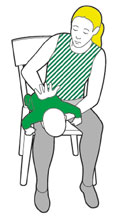
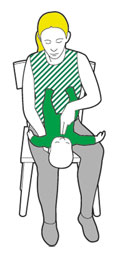
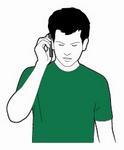
References:
"Choking:first Aid." First Aid. N.p., 19 Sept. 2014. Web. 28 Aug. 2016."What Should I Do If a Baby Is Choking?" Common Health Questions. N.p., 6 Nov. 2015. Web. 28 Aug. 2016.
